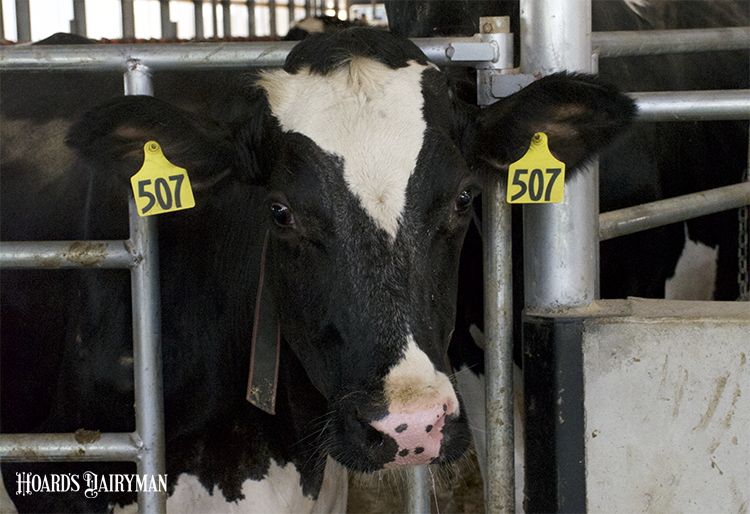
Moving a cow out of the fresh pen and into the general herd population might allow a farm manager to breathe a small sigh of relief that the cow has made a successful transition. And while that is an encouraging sign, a successful transition is not simply a binary trait of determining if a cow “made it” or not, described Eduardo Ribeiro. In reality, each cow can experience a spectrum of success between an optimal transition and one that is impaired.
During the Dairy Cattle Reproduction Council annual meeting, Ribeiro summarized that an ideal transition typically means the cow was dry for 40 to 50 days, maintained a body condition score of 3 to 3.5 throughout the dry period, has an easy calving of one calf, develops a good appetite, and avoids clinical disease. Shortfalls in any of these areas can create subsequent problems.
Clinical disease is, of course, often the most obvious sign of an impaired transition, and it is the one the University of Guelph professor said is the most critical to the degree of transition success. He defined clinical disease as including lameness and digestive or respiratory problems in addition to metabolic issues. Roughly half of cows will develop one of these concerns over the course of their lactation, Ribeiro said, but the majority will be in the first 60 days in milk (DIM). In fact, he pointed to one study of more than 5,000 cows which showed that almost one-third of cows were affected in the first three weeks of lactation.
Clinical disease has both short-term costs and long-term expenses. A drop in production and any medicine to treat the animal are the immediate costs, but future performance is impacted, too. In addition to having a harder time becoming pregnant, Ribeiro described a study where cows who were sick in the first two weeks had more pregnancy losses even when they were bred after 200 DIM.
“It’s more difficult to get them pregnant, and when they do, they’re more likely to lose it,” Ribeiro stated.
Herd life is also affected, as he noted an analysis where just 22.6% of cows with no clinical disease were out of the herd by 305 DIM. However, 35.7% of cows with one disease incidence had been culled, and for cows with multiple illnesses, that number rose to 53.8%.
Cut down on disease effects
How do we limit these outcomes from occurring? Ribeiro’s first piece of advice was to prevent disease with thoughtful genetics, good infrastructure, and proper management. On the topic of breeding for health and reproduction traits, he said, “It’s not something that will solve your problems today, but over time, it will make a difference.”
He also emphasized the need for cows to be dried off at a body condition score of 3 to 3.5 and maintain that through the dry period until calving. Losing significant body condition while dry leads to greater disease incidence, worse reproduction, and greater culling. “The ones that lose body condition are the ones that are fat,” Ribeiro explained.
Once you have a disease, there is no quick fix, he continued. You can only minimize the effects, and that’s done best by identifying sick cows or those at risk sooner and treating them with the most effective protocol.
Finally, Ribeiro advised monitoring clinical disease incidence over time. Is the herd improving, stabilizing, or getting worse? This will help focus in on what trends are occurring and any necessary areas of improvement. Ribeiro suggested that incidence of clinical disease in the first 21 DIM should be monitored like milk production or pregnancy rate is.








